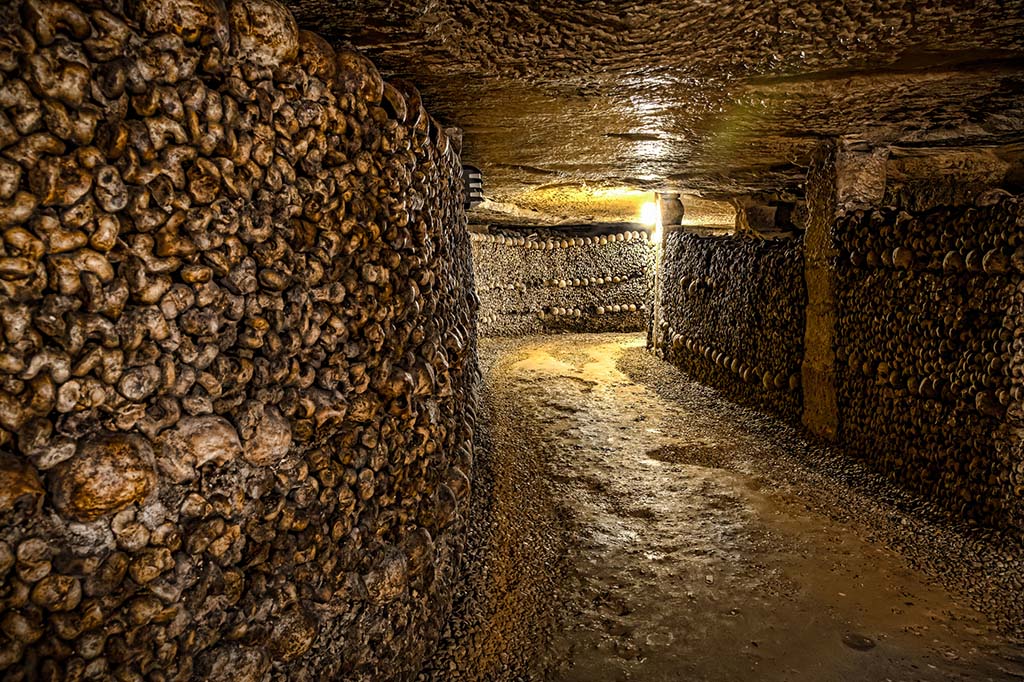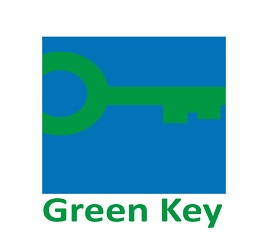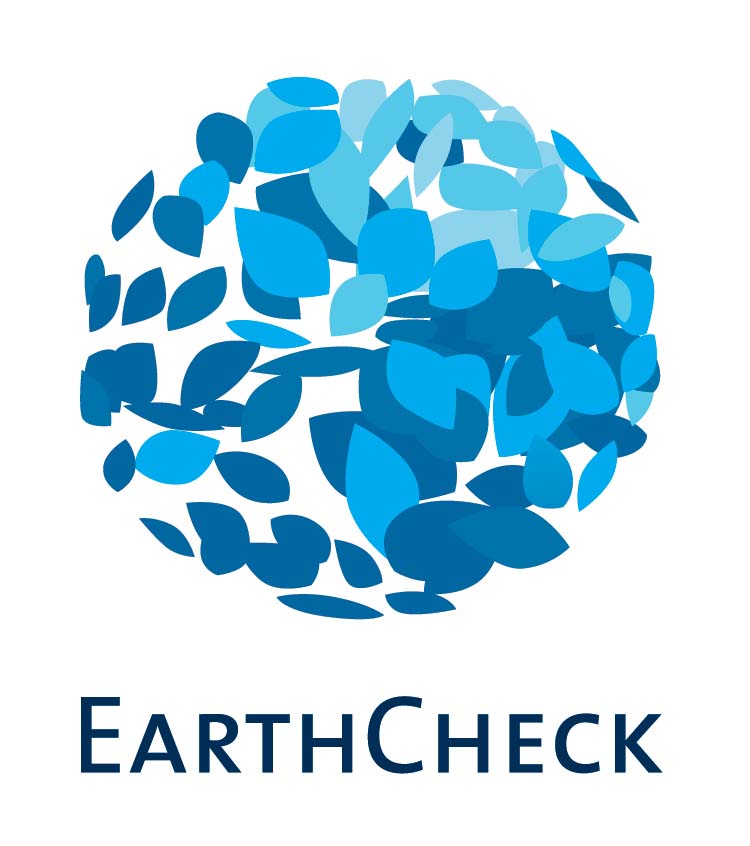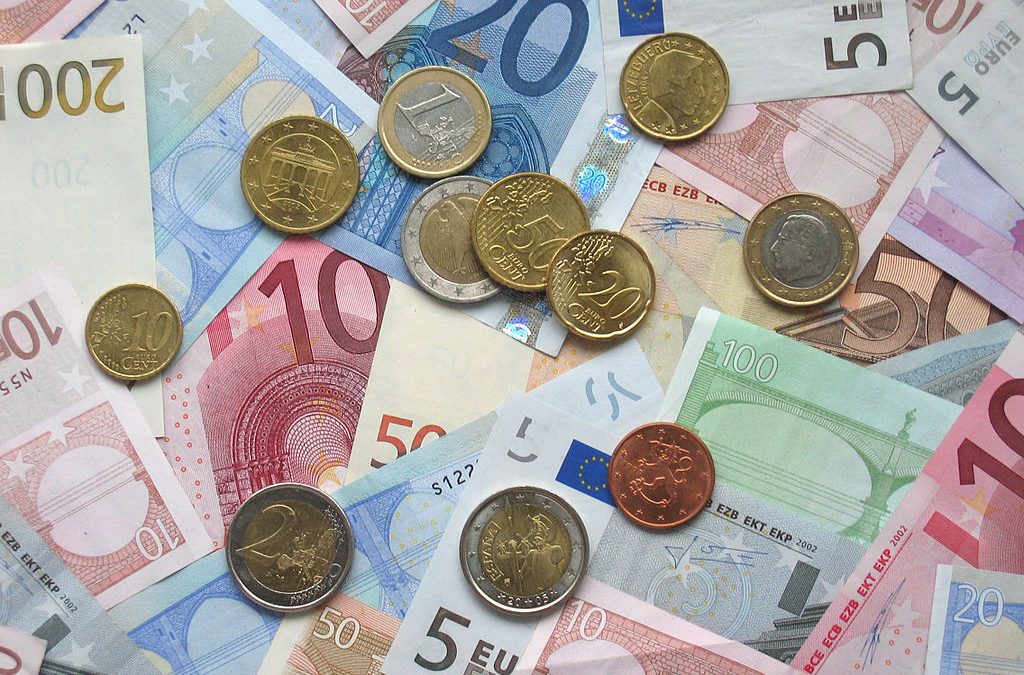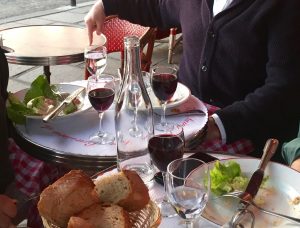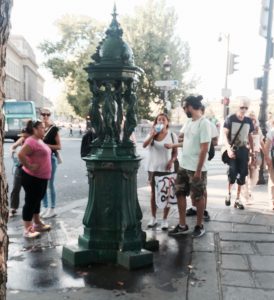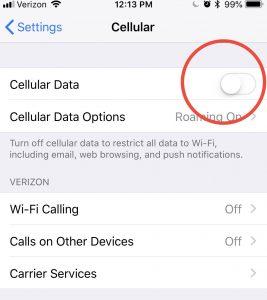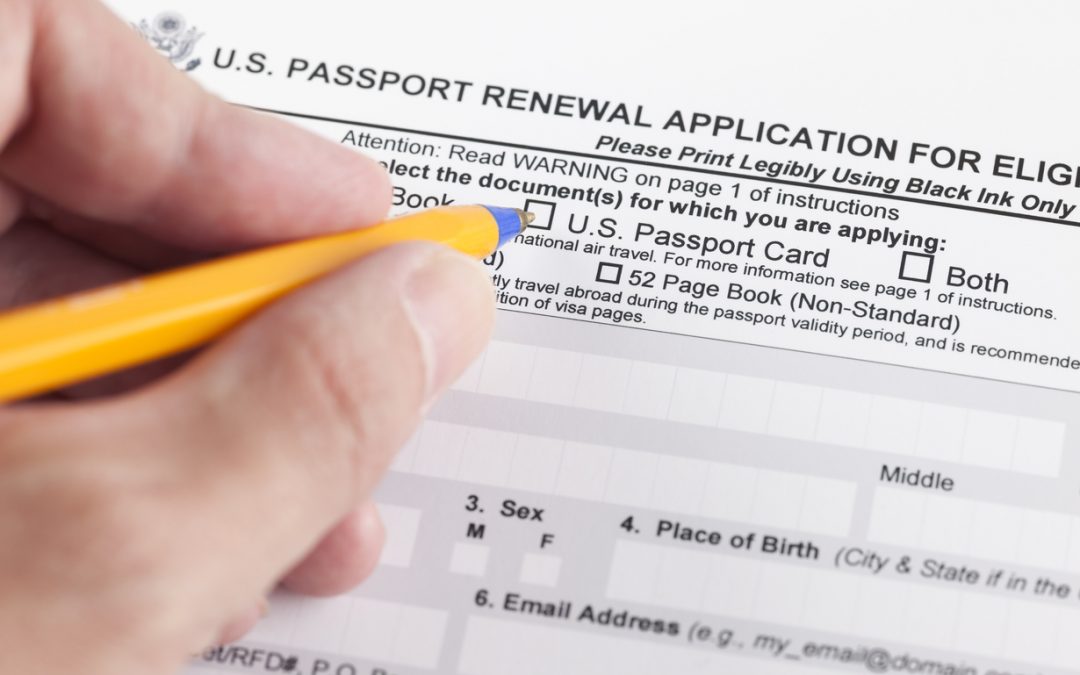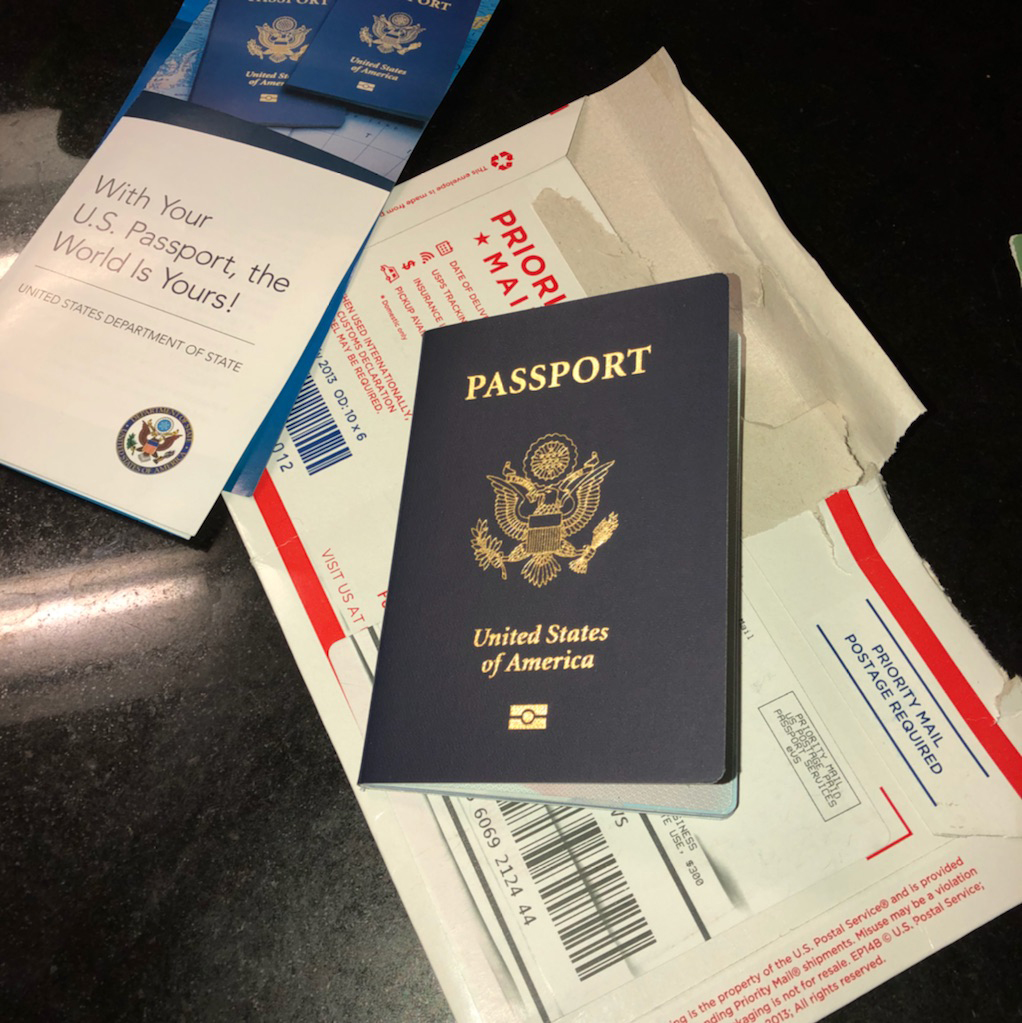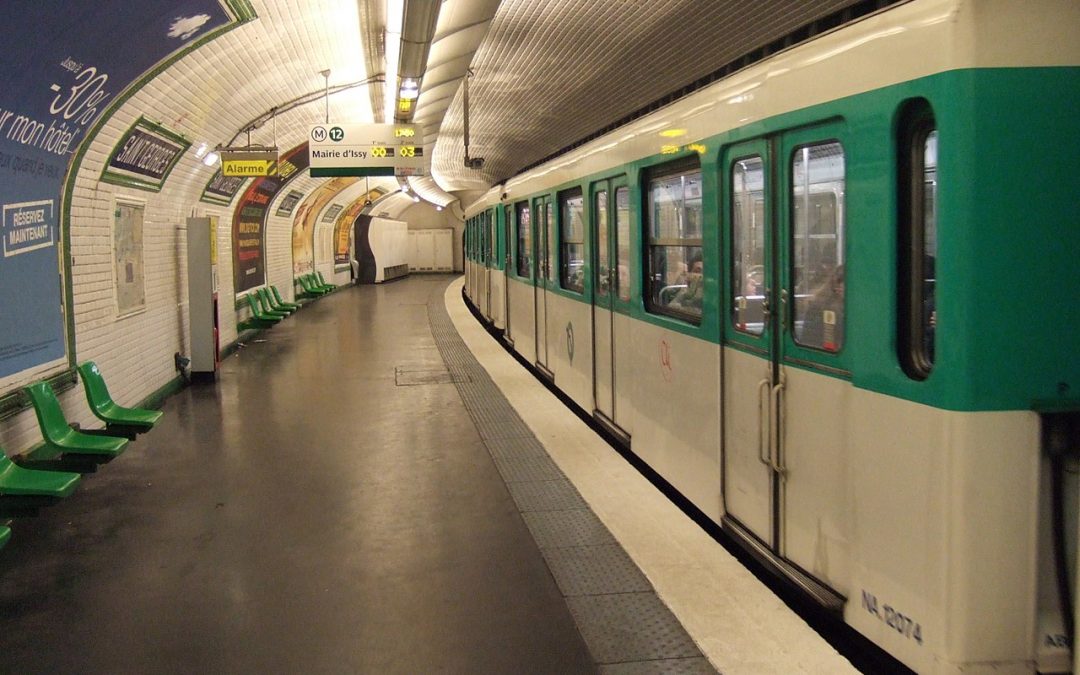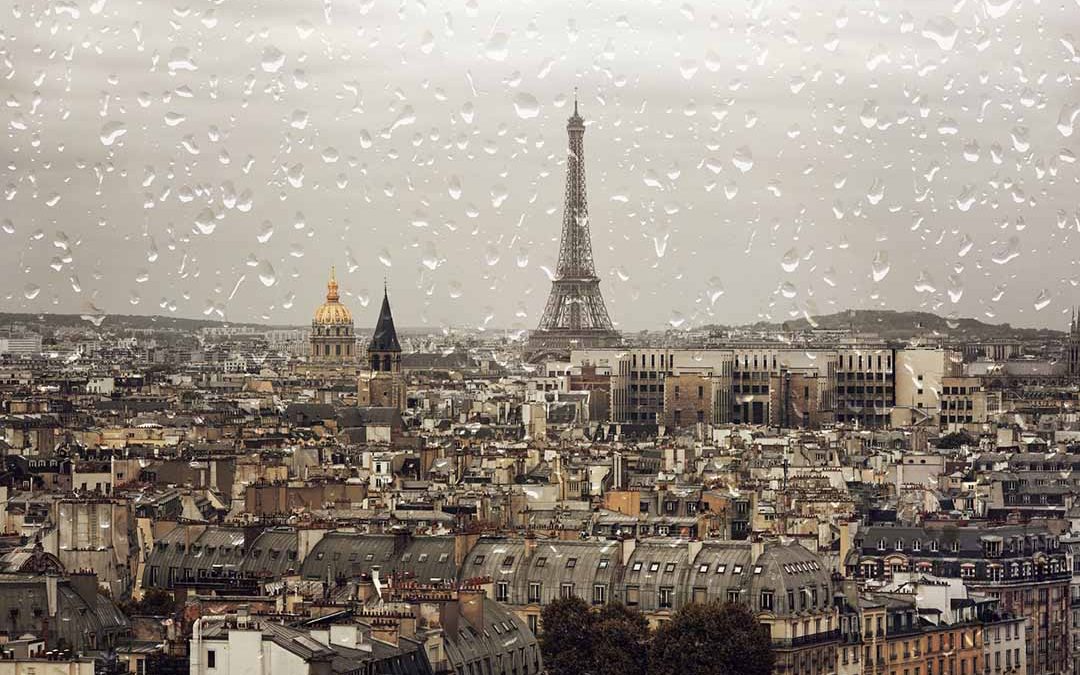
What To Do When It Is Raining in Paris
First, stop and take stock when it is raining in Paris. Try to assess how much rain it is going to be. A whole day of rain? Or, only a brief shower? A deluge or a drizzle? If it is supposed to rain all day long, then you may want to adjust your schedule. If it is only a sprinkle, keep going full speed ahead with the day as planned.
Most importantly, take a deep breath and remember, rain is not the end of the world. It will not ruin your vacation. Paris does not close up when it rains. Open top bus tours still run – put on a poncho.
If it really is going to rain all day long, see if you can find some inexpensive waterproof shoes and take an umbrella and explore. Paris in a drizzle is one of my favorite times. The colors seem to become saturated on buildings, trees, park benches, grass, the cars…. The gray clouds make ancient buildings even more enticing. The narrow streets in the Marais are even more inviting.
But, if it is raining and umbrellas are everywhere, avoid busy rush hour foot traffic. Eyes are a precious commodity that shouldn’t be poked with umbrella tips. Between 5:30-6:30 – to take a rest back at the hotel, or rejuvenate with coffee at a cafe.
The most logical place to go when it is raining in Paris is to visit a big museum – like the Louvre. A big museum has exhibits, shopping, food, and drink. And, it can be a good idea, depending on the time of year. But, everyone else is thinking the same thing. So the big museums will be mobbed with people trying to avoid the water. Besides traditional museums, here are a few suggestions for things to do in Paris when it is raining.
An Unusual Museum Visit
Weren’t thinking of the Musée de la Chasse et Nature? Well, a rainy day may change your mind. Pull out your guidebook and look up museums. Choose one or two that you never thought you would visit. Take a chance. The worst thing is that you go, take a look, leave and go back out into the rain. However, the upside is you may see something incredible, take in important architecture and history – and have fun – while dry.
Catacombs
Nearly 70 feet below the surface, Paris has an extensive network of underground passages that were once limestone quarries. From the late 1700s until the mid-1800s, millions of human bones were exhumed from cemeteries and moved into these subterranean quarries. Although the official website states that the “tour is unsuitable for people with heart or respiratory problems,” and “those of a nervous disposition and young children,” it is a dry place to explore an interesting part of Paris’ history. Les Catacombes de Paris: 1, avenue du Colonel Henri Rol-Tanguy, 75014; Métro: Denfert-Rochereau; Closed Mondays, check the website for more details.
Sewer Museum
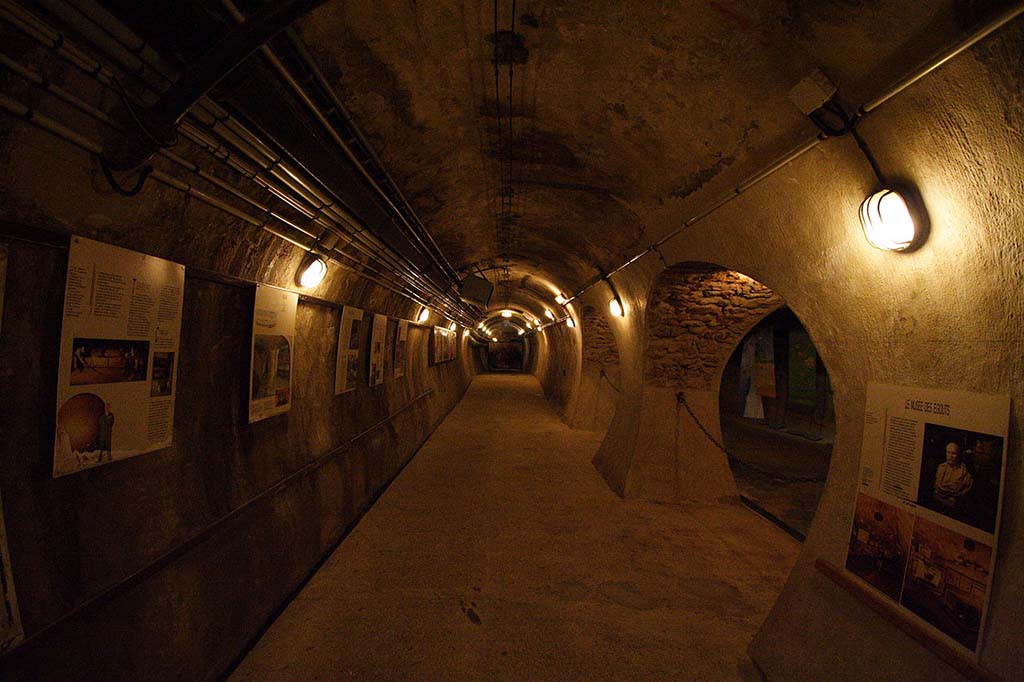 Engineering wonders lurk beneath all cities, but Paris displays its sewers in grand style – in a museum, no less. When it is raining in Paris, take a tour through the tunnels that not only serve as sewers but also provide the passageways for internet and phone cables, tubes that run between post offices (like at the bank teller line) and pipes filled with drinking water. In the past, tourists were ferried through in boats and suspended carts. Now, admire the amazing workings on foot. The museum also boasts a gift shop! Musée des Égouts de Paris; Near the bridge, Pont de l’Alma, across the street from 93 quai d’Orsay, 75007; Métro: Alma-Marceau; or RER: Pont de l’Alma.
Engineering wonders lurk beneath all cities, but Paris displays its sewers in grand style – in a museum, no less. When it is raining in Paris, take a tour through the tunnels that not only serve as sewers but also provide the passageways for internet and phone cables, tubes that run between post offices (like at the bank teller line) and pipes filled with drinking water. In the past, tourists were ferried through in boats and suspended carts. Now, admire the amazing workings on foot. The museum also boasts a gift shop! Musée des Égouts de Paris; Near the bridge, Pont de l’Alma, across the street from 93 quai d’Orsay, 75007; Métro: Alma-Marceau; or RER: Pont de l’Alma.
Watch a Movie
Parisians are devoted fans of cinema. As a result, movie theaters dot the city. Even the avenue des Champs-Élysées is full of movie theaters. Don’t look for a megaplex like you see in the suburbs. These movie houses will have a sign on the street advertising the current films. Once you pass the entrance, then you may find multiple theaters. Many American movies are shown at the theater with French subtitles. So, head in during a downpour and enjoy hearing your mother tongue.
Shopping at Galeries Lafayette and Printemps
These department stores feature MANY departments! For the dedicated shopper, when it is raining in Paris, it is a shopping day in Paris. If you do not find what you are looking for in one, walk down the street and look in the other one. Another bonus on a rainy day is that much of the sidewalk around the two behemoths are covered. So don’t fret too much about getting your packages wet. Also, both have amazing architecture inside and out plus full-service cafés for eating, resting and re-loading on caffeine and hot chocolate. Rest and retail therapy all under two roofs – barely a block away from each other.
Cooking Class
Want to learn some basics, make pastries or cook a meal while in Paris? When it is raining may be a good time to do it. Many places offer cooking classes for real beginners as well as advanced cooks. A great part about taking a cooking class is that you get to eat what you cook! And, the classes are indoors. Start looking at options now so if it does rain, you can have a list ready to book online or ask the concierge to help you book on the day you want one. La Cuisine Paris (or The Paris Kitchen) gets rave reviews. Check it out here. https://lacuisineparis.com
Long Lunch at a Nice Restaurant
When it is raining in Paris, or scheduled to rain for a good chunk of mid-day, reserve a spot at a fancy restaurant. This is your chance to take advantage of the “down” time outdoors to relish a long lunch. All without feeling guilty about not doing other things. Enjoy the pampering and delicious foods at reduced lunchtime prices.
Visit Parapluies Simon When It Is Raining In Paris!
Forgot your umbrella? No worries. Make a special trip to Parapluies Simon and find a souvenir when it is raining in Paris. This umbrella store on Boulevard St. Michel in the 6th is full of specialty rain protectors and also takes custom orders. Find out more.
River Cruise
Yes, when it is raining in Paris, take a covered river cruise. It can be FUN in the rain. Even if it is pouring, you will stay dry, hear the pounding rain (no chance of hearing the tour guide on the loudspeaker), scream to hear each other and still be able to have some great views. Plus, it will be even more memorable because you will have a fun story to tell of taking the boat in the pouring rain.
And, Last But Not Least
A friend wrote and said, “After all, Paris is the most incredibly romantic city.” So, hang the “Do Not Disturb” (Ne Pas Déranger) sign on the doorknob outside your room and enjoy Paris in a very intimate way while the rain is falling on the window panes.
